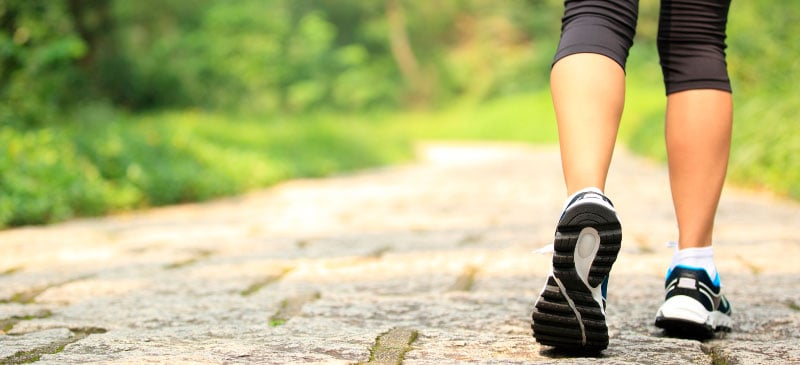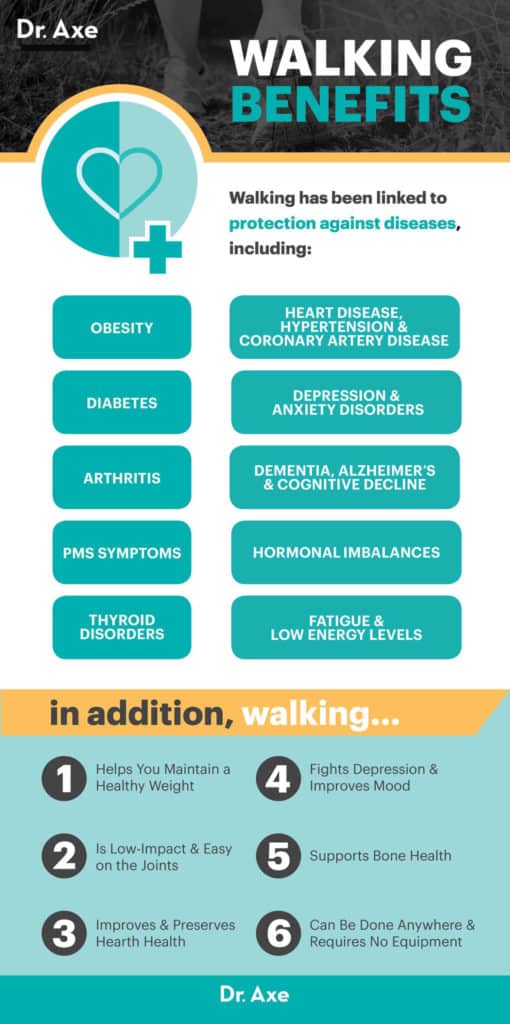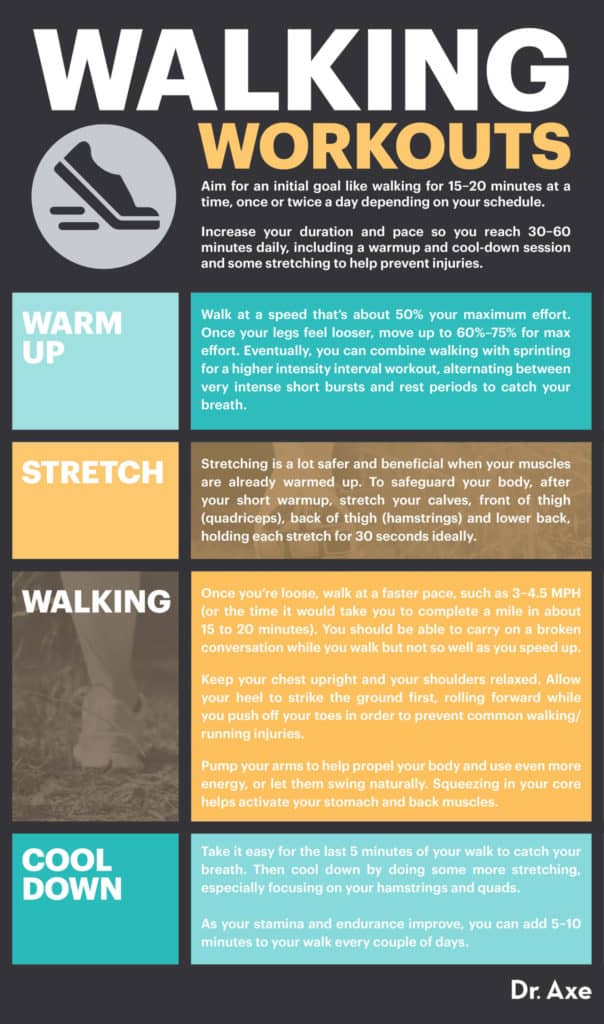This Dr. Axe content is medically reviewed or fact checked to ensure factually accurate information.
With strict editorial sourcing guidelines, we only link to academic research institutions, reputable media sites and, when research is available, medically peer-reviewed studies. Note that the numbers in parentheses (1, 2, etc.) are clickable links to these studies.
The information in our articles is NOT intended to replace a one-on-one relationship with a qualified health care professional and is not intended as medical advice.
This article is based on scientific evidence, written by experts and fact checked by our trained editorial staff. Note that the numbers in parentheses (1, 2, etc.) are clickable links to medically peer-reviewed studies.
Our team includes licensed nutritionists and dietitians, certified health education specialists, as well as certified strength and conditioning specialists, personal trainers and corrective exercise specialists. Our team aims to be not only thorough with its research, but also objective and unbiased.
The information in our articles is NOT intended to replace a one-on-one relationship with a qualified health care professional and is not intended as medical advice.
Benefits of Walking to Lose Weight, Manage Blood Sugar & Extend Life
April 4, 2024

When most people decide it’s time to practice some healthier habits, simply walking to lose weight and improve their health might not seem like it’s going to do “enough” to give them the benefits of exercise they’re after. The truth is walking is the oldest form of human physical activity there is, and the benefits of walking are great!
Long before the days of CrossFit, voluntarily running marathons or working out in gyms, people walked — and they walked a lot.
While it might not give you the ripped body you always dreamed of (though it’s a great butt exercise and is considered a good leg workout), walking is a great place to start if you’re new to exercising or simply lack motivation to be more active. Even if you’re a seasoned athlete and prefer really working up a sweat by doing burst-fit training, HIIT workouts or a demanding sport, walking can still be a great form of activity that complements these tougher workouts.
Considering that walking is super convenient, doesn’t wear down joints yet still burns calories, revs up your metabolism and can help prevent dozens of different diseases, there’s really no downside to walking more.
Plus, research shows that just 10 minutes of walking per day is linked to a longer life, while as little as two minutes of walking after eating can help manage blood sugar.
How Walking Supports Health
A study conducted by the London School of Economics and Political Science shined the spotlight on walking as one of the very best preventative measures for fighting off weight gain. Prior to that particular study, dozens have shown that daily walking is beneficial for keeping people feeling younger, healthier and happier.
The London School of Economics and Political Science study concluded that regularly walking for weight loss could be just as beneficial, or even more, as hitting the gym. The results of the study, which investigated the effects of various workouts on health markers in more than 50,000 adults over the course of 13 years, found that walkers tend to be thinner than those who go to the gym or regularly only practice high-intensity workouts.
Walking briskly and deliberately for at least 30 minutes a day was correlated with having a lower body mass index and a smaller waistline compared to non-walkers. What’s even more impressive is that the results were particularly pronounced in women, people over 50 and those with low incomes — three populations that notoriously struggle with their weight.
Even though people have been helping control their body weight and boost their longevity by walking since the beginning of time, we first heard about intentionally walking to lose weight and fight off certain diseases around the 1990s. Walking daily for health gained attention at this time when the Centers for Disease Control and Prevention in partnership with the American College of Sports Medicine first recommended at least 30 minutes of “brisk walking” for all adults most days of the week.
At the same time, the American Heart Association got on board with the “30 minutes of walking daily” message. Walking has since been considered the gold standard for meeting the guidelines of daily “moderate-intensity physical activity,” since it can be done by just about anyone, at any time, for no cost whatsoever.
Over the years, walking has been linked to protection against certain conditions and diseases, including:
- Obesity
- Heart disease, hypertension, coronary artery disease
- Diabetes
- Depression and anxiety disorders
- Dementia, Alzheimer’s and cognitive decline
- Arthritis
- Hormonal imbalances
- PMS symptoms
- Thyroid disorders
- Fatigue and low energy levels
Most of what we know about the health benefits of walking comes largely from epidemiologic and correlational studies, meaning researchers observe populations who walk frequently and then compare certain factors of their health to people who don’t walk as much.
Because of that, we can’t always conclude that walking itself helps keep weight gain away or makes someone less likely to develop a disease — but we can assume that people who walk more also probably practice other healthy habits, which all come together to protect them from the various effects of aging.
Health Benefits of Walking
If you’re not already intentionally walking daily, here are several reasons you might want to start:
1. Helps You Maintain a Healthy Weight
As mentioned earlier, walking is just as effective — possibly even more effective in some circumstances — as more intense workouts when it comes to weight loss or maintenance. This is even true when compared to various “rigorous” activities that increase your heart rate and cause you to sweat, like swimming, cycling, working out at the gym, dancing, running, football/rugby, badminton/tennis, squash and aerobic exercises. All of these exercises were compared in the London School study, but the weight loss benefits of walking still held up.
If walking for around 30 minutes doesn’t burn tons of calories like other vigorous workouts can, you might wonder how it can help with weight loss. Walking at a fast or brisk pace does use up a good amount of bodily energy, but the advantage might be that it’s an easy exercise hack to keep up with, has particular mental benefits and doesn’t wear someone out the way that other demanding activities might.
At the end of the day, any type of exercise is only going to be beneficial if you actually keep up with it. Since so many people can maintain a regimen of walking without becoming injured, it seems to offer serious long-term benefits.
Some theorize that doing an intense workout for about one hour a day might make some people less likely to do much else for the remainder of the day. Things like heavy housework, cooking, cleaning, shopping, mowing the lawn, etc., all take up a lot of physical energy — and for most busy adults, there’s only so much to go around.
It also could be more of a mental effect when it comes walking: Once the workout box is “checked,” the rest of the day people might feel they’re “off the hook” and don’t need to focus on moving around so much. When someone walks daily for exercise, the net effect might be that that person burns more calories overall throughout the day, even though her actual workout was less strenuous, because she perceives walking to be easier, which frees up more energy.
Additionally, walking seems to be therapeutic for many people and soothing (especially when it’s done outdoors). Since walking can help balance stress hormones like cortisol, which are known to increase cravings and fat storage, it might make it easier to stick with other healthy habits — like eating a nourishing diet and getting good sleep, which both support you in your quest to lose weight fast.
One area where fat loss can occur with a lot of walking? The inner thigh. Walking should be part of your inner thigh workout plan.
2. Low-Impact and Easy on Joints
One of the best things about walking is that it can help fight chronic diseases without putting you at even a moderate risk for exercise-related injuries. According to some studies, people who are less likely to do other types of exercise are still inclined to take up walking, both for their health and for enjoyment.
It’s just about the safest form of exercise there is, even for adults who are obese, the elderly or those with existing medical conditions, like diabetes, heart disease and arthritis, that might stop them from participating in other activities.
You might assume otherwise, but regular walking actually supports your joints since it improves circulation and helps the lymphatic system do its job, pulling toxins out of the body and lowering inflammation. Normally, joint cartilage has no direct blood supply, but the more you move, the more your synovial joint fluid circulates, allowing oxygen and nutrients to be brought to delicate or injured areas.
In fact, according to the Arthritis Foundation, staying inactive is one of the primary reasons for achiness and soreness since this results in joints being cut off from essential fluid supply.
If you’ve suffered injuries or have aches and pains from the past, you can gradually increase the intensity of your walking without needing a personal trainer or much guidance. Stretching, resting enough and starting slow can help prevent pains and further inflammation.
3. Good for Improving and Preserving Heart Health
A 2013 study published in the American Journal of Preventative Medicine found that briskly walking has beneficial effects on resting heart rate, blood pressure, exercise capacity, maximal oxygen consumption and quality of life. The study followed over 1,000 patients who had various diseases and found that walking had significant benefits in the majority of adults, offering protection from heart attacks, strokes or coronary heart disease.
Heart disease is the No. 1 killer in the U.S. and is tied to the modern-day sedentary lifestyle, with its lack of everyday physical activity coupled with high stress levels and a poor diet. Brisk walking is considered a simple, safe and effective form of exercise even for people who are older, have a history of disease or who have suffered previous injuries that stop them from doing high-intensity workouts.
Studies show that walking briskly for about 30 minutes a day, five days a week (which is what most authorities recommend) is associated with a 19 percent reduction in coronary heart disease risk, while increasing your speed and intensity (such as hitting some hills that turns walking into a great quad exercise) can give you even more protection. Essentially, the harder you work while walking, plus the more you do, the better off you’ll be.
That’s not all. A 2022 study backed up these heart-healthy claims, showcasing that walking as little as two minutes after a meal can support blood sugar levels and other biomarkers associated with heart disease.
For the most heart-healthy benefits, try gradually increasing your total walking duration, distance, frequency, energy expenditure and pace.

4. Fights Depression and Improves Your Mood
Good news: You can get the same “runner’s high” even when you take it slower and walk. All forms of exercise are beneficial as a natural remedy for depression and mood-related problems since they release “feel good” hormones in your brain, including endorphins.
Want to feel an even bigger impact from walking? Walk outdoors (a good way to work out in the cold or exercise in the heat), and practice “earthing” by putting your bare feet in direct contact with the grass or sand. Getting your blood flowing while also soaking up some sun, boosting your vitamin D levels and spending more time in nature are all super effective and easy ways to feel happier every single day.
Walking can also keep you sharp as your age. It’s associated with a decreased risk for Alzheimer’s disease, dementia, memory loss and other forms of mental decline. One study done by the University of California San Francisco found that walking is even associated with longevity and a longer life span.
Another study from the same department followed nearly 6,000 women over the age of 65 and found that walking 2.5 miles per day resulted in significantly more protection from memory loss than walking less than a half-mile per week.
In addition, it appears that walking speed and number of steps taken can affect dementia risk, so how fast and how long someone walks can be a good indicator of their potential to develop cognitive issues.
5. Supports Bone Health Into Older Age
Similarly to other types of exercise, walking regularly can help stop the loss of bone mass as someone ages. Your risk for porous bone diseases drops when you walk and move your body because you’re fighting gravity, forcing your bones to become stronger in order to support your body weight. This reduces the risk for fractures or osteoporosis, which become more common as you grow older.
One study done by Brigham and Women’s Hospital found that postmenopausal women who walked for 30 minutes a day reduced their risk of hip fractures by 40 percent.
6. Can Be Done Anywhere and Doesn’t Require Equipment
Can’t afford a fancy gym membership, or have no time to regularly attend high-end fitness classes? No problem, because walking can be done right from your own front door and costs absolutely nothing. You don’t even necessarily have to do all your walking at one time to make it count.
It all “adds up,” so to speak, since simply walking more throughout the day can gradually bring you closer to your daily goal of 30–60 minutes of exercise. Even shorter walks done several times per day, such as 15–20 minutes at a time when you have time, contribute to better muscular, heart and hormonal functioning.
Still lacking motivation to get started? Try thinking of walking as a form of transportation that at the same time conveniently also comes with numerous health benefits.
Several interesting studies have shown that walking and cycling for transportation are associated with an 11 percent reduction in heart disease risk and tied to improvements in inflammatory markets, dyslipidemia, triglycerides, diastolic blood pressure and fasting insulin levels.
Consider the layout of your neighborhood or work location, and try to build in more walking throughout your day that seems purposeful, such as doing errands by foot or walking to nearby friends’ houses.
Walking to Lose Weight: How Much Do We Need to Do?
Walking is considered a moderate-intensity activity, with most experts recommending people aim to walk “briskly” at a speed of at least three to four miles per hour to get the most effects when it comes to walking to lose weight. To put it into perspective, a “light jog” is usually done at about 5–6 mph, while sprinting can be as fast as 9–10 mph (or even more if you’re really going all-out).
Another common goal is walking about 10,000 steps per day — around four to five miles (depending on your stride) — which accumulates gradually as you go about your normal errands and activities. Normally, a mile takes about 2,000 steps to walk, so you can increase your distance slowly as you move toward a higher step goal.
Research released in 2021 found that regularly registering as little as 7,000 steps a day could lower your risk of early death by 50 percent to 70 percent compared to people who chronically who take fewer steps daily.
How much walking do you need to do to actually lose weight or notice changes in your body composition? Like all things health-related, it depends on your individual body type and also the combination of all other factors of your lifestyle — like the quality of your diet and sleep, the type of work you do for a living, and your stress levels.
After all, if your diet is pretty crummy, you always lack sleep and you sit most hours of the day besides the brief time when you exercise, simply doing more walking to lose weight probably won’t do much.
The U.S. government (and many other countries) recommends that adults do 150 minutes or more of moderate-intensity physical activity every week. In other words, aim for at least 30 minutes of briskly walking almost every day, ideally, and don’t be afraid to do more when time allows.
Sixty to 90 minutes might be even more beneficial when it comes to weight loss, but don’t let being short on time feel overwhelming and stop you from doing anything at all. It doesn’t have to be “all-or-nothing” — every little bit throughout the day helps.
While walking is fantastic, don’t be quick to forget about the recommendations for strength training too. It’s a good idea to consider adding several moderately intense, strength-building workouts into your weekly routine — that is if you’re capable enough to do so.
Walking to lose weight is even more effective if you challenge your muscles and continue to switch up how you train your body (and your mind).
For example, performing one to three high-intensity interval training workouts along with walking can speed up results big time. HIIT workouts can be shorter than your walks, done in just about 10–20 minutes, and high-intensity interval training benefits are far-reaching when it comes to weight loss, metabolic function, muscle building and blood sugar control.
Plus, experts point out that doing purely aerobic training is great, but when you ignore building strength you might actually put yourself at a greater risk for orthopedic injuries, bone loss, muscle loss and other issues.
The bottom line? Get moving, but switch things up and keep it fun to support your body best.
Tips and Workouts
If you’re not already active, it’s a good idea to start slowly and kick up your intensity gradually, even if you’re eager and want to get walking to lose weight. Aim for an initial goal like walking for 15 to 20 minutes at a time, once or twice a day depending on your schedule. Increase your duration and pace so you reach 30–60 minutes daily, including a warmup and cool-down session and some stretching to help prevent injuries.

- To warm up: Take it slower at first, and walk at a speed that’s about 50 percent your maximum effort. Once your legs feel looser, you can move up to 60 percent to 75 percent of your max effort. If you’re capable, eventually you can combine walking with sprinting for a higher-intensity interval workout, alternating between very intense short bursts and rest periods to catch your breath.
- Despite what most people think, stretching is a lot safer and beneficial when your muscles are already warmed up, since this helps them become more flexible. It’s not always necessary to stretch before walking, but it’s definitely a good idea if you’re prone to injuries or you plan to alternate between walking and running (especially if you’re just beginning running). To safeguard your body, after your short warmup you can focus on stretching your calves, front of thigh (quadriceps), back of thigh (hamstrings) and lower back, holding each stretch for 30 seconds ideally.
- Once you feel loosened up, start to walk at a faster pace, such as 3–4.5 mph (or the time it would take you to complete a mile in about 15 to 20 minutes). In terms of your effort, you should be able to carry on a broken conversation while you walk but not so well as you speed up.
- When it comes to proper walking form, keep your chest upright and your shoulders relaxed. Allow your heel to strike the ground first, rolling forward while you push off your toes in order to prevent common walking/running injuries. You can also pump your arms to help propel your body and use even more energy or let them swing naturally. Squeezing in your core will help activate your stomach and back muscles.
- To end your workout, you can take it easy for the last five minutes of your walk to catch your breath. Then cool down by doing some more stretching, especially focusing on your hamstrings and quads, which can become tight. Using an inexpensive foam roller after a workout is a great way to massage the deep fascia tissue that can become sore when walking or running, so consider keeping one at your house.
As your stamina and endurance improve, you can add five to 10 minutes to your walk every couple of days. You might start out walking three times per week and soon find you’re walking five to six days. That’s what can happen when you notice the positive difference in your body and mood!
You can even start trying rucking, which is walking with a rucksack for added weight to build more muscle.
Once you’re walking for 30–45 minutes, you can focus on improving your speed or distance — for example, making your goal to walk a longer distance in the same amount of time (such as three miles in 40 minutes instead of 2.5). The more time you can spend in a “high effort” zone, such as 50 percent to 60 percent of your maximum exertion, the more benefits you will get, so try to aim for at least 20 minutes at this level.
Remember that you can keep things interesting by walking with a destination in mind (such as the grocery store or even to work), changing up your route, taking the stairs more often instead of an elevator or parking your car farther away from where you’re going.
Still worried about injuries? The good news is that people are actually most prone to injuries when they stay inactive, so the more you do, the better you’ll be protected. Just like the old saying goes, “Move it or lose it.”
You also can help prevent injuries by wearing proper shoes, stretching, warming up and starting slow.
If your sneakers are old and worn-out, try replacing them and even having your feet fitted at an athletic store to make sure your sneakers support your form best. Look at the heels of your sneakers to see if they seem worn-out and uneven, which is a sign you need new ones!
Some initial soreness in your joints and muscles is normal at first when you begin walking, but this should go away as your muscles adjust to your new activity level.





